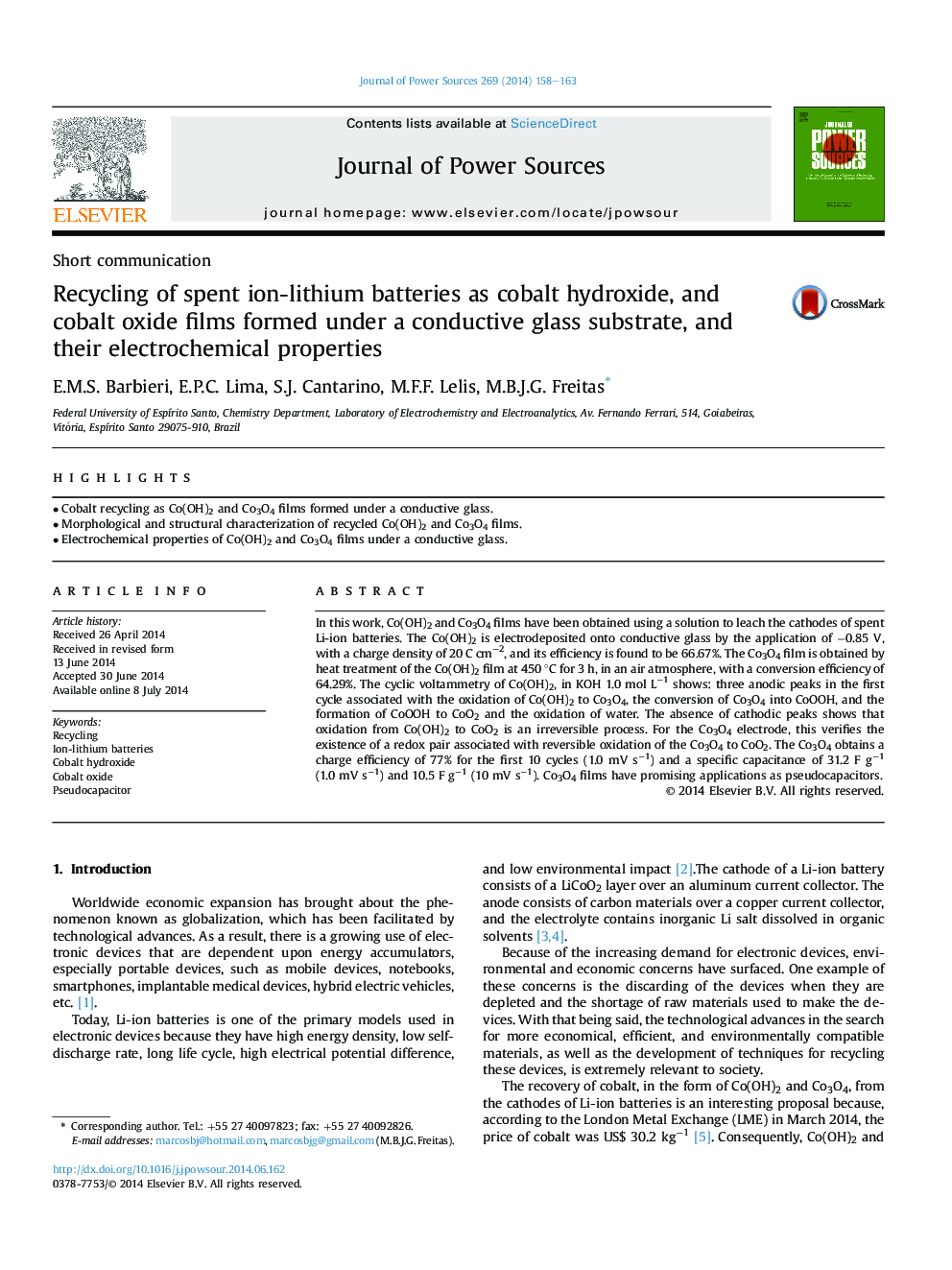| Article ID | Journal | Published Year | Pages | File Type |
|---|---|---|---|---|
| 7736238 | Journal of Power Sources | 2014 | 6 Pages |
Abstract
In this work, Co(OH)2 and Co3O4 films have been obtained using a solution to leach the cathodes of spent Li-ion batteries. The Co(OH)2 is electrodeposited onto conductive glass by the application of â0.85 V, with a charge density of 20 C cmâ2, and its efficiency is found to be 66.67%. The Co3O4 film is obtained by heat treatment of the Co(OH)2 film at 450 °C for 3 h, in an air atmosphere, with a conversion efficiency of 64.29%. The cyclic voltammetry of Co(OH)2, in KOH 1.0 mol Lâ1 shows: three anodic peaks in the first cycle associated with the oxidation of Co(OH)2 to Co3O4, the conversion of Co3O4 into CoOOH, and the formation of CoOOH to CoO2 and the oxidation of water. The absence of cathodic peaks shows that oxidation from Co(OH)2 to CoO2 is an irreversible process. For the Co3O4 electrode, this verifies the existence of a redox pair associated with reversible oxidation of the Co3O4 to CoO2. The Co3O4 obtains a charge efficiency of 77% for the first 10 cycles (1.0 mV sâ1) and a specific capacitance of 31.2 F gâ1 (1.0 mV sâ1) and 10.5 F gâ1 (10 mV sâ1). Co3O4 films have promising applications as pseudocapacitors.
Related Topics
Physical Sciences and Engineering
Chemistry
Electrochemistry
Authors
E.M.S. Barbieri, E.P.C. Lima, S.J. Cantarino, M.F.F. Lelis, M.B.J.G. Freitas,
